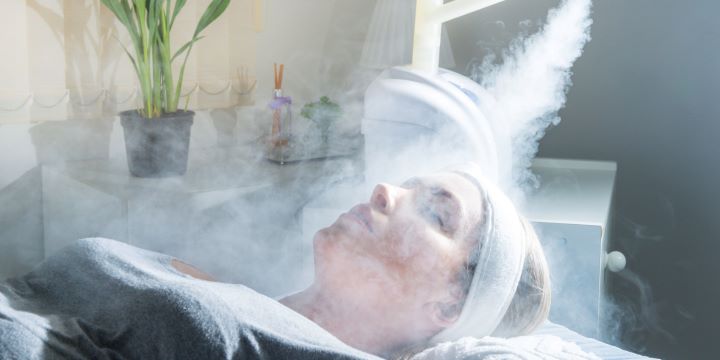Key Takeaways:
- Ozone therapy has historical roots but is gaining contemporary attention as an alternative treatment.
- The therapy’s biological action lies in its oxidative capacity, eliciting a robust antioxidant response.
- Research highlights its potential use in pain management, immune support, and treating certain diseases.
- Patient testimonials and evolving medical technologies suggest a future where ozone therapy could be more widely accepted.
Table of Contents:
- Introduction to Ozone Therapy
- The Mechanism of Action
- Potential Health Benefits
- Medical Conditions and Ozone Therapy Applications
- Safety and Efficacy
- Patient Experience with Ozone Therapy
- The Future of Ozone Therapy in Modern Medicine
- Ethical and Legal Considerations
- Finding Reliable Providers
- Conclusion
Introduction to Ozone Therapy
Over the years, the sphere of alternative medicine has grown, with treatments like ozone therapy in New York City surging in popularity for their unique approaches to health and wellness. Ozone therapy, characterized by introducing ozone—a dynamic form of oxygen—into the body, aims to harness its reactive properties for therapeutic gains. The concept isn’t new; its medicinal use dates back to the 19th century, when it was initially harnessed for its disinfectant properties and has evolved in application over time. Nowadays, it’s considered a complementary or alternative therapy and has seen wider application across global practices, aligning with a rising patient-driven demand for diverse treatment options.
Despite its intriguing premise as a treatment, comprehension of ozone therapy’s principles and effects is essential. Its administration methods are numerous, including autohemotherapy, direct gas insufflation, and ozonated water—all aiming to leverage ozone’s supposed healing properties. Tracing the evolution of its usage sheds light on the therapy’s potential benefits, the scientific community’s response, and the growing interest among health-seeking individuals.
The Mechanism of Action
The linchpin of ozone therapy is the induction of controlled oxidative stress, a deliberate disturbance that invokes the body’s natural antioxidant defenses. By stimulating such mechanisms, ozone therapy may improve the body’s immune response, modulate inflammation, and promote antimicrobial activity. Its operational heart rests on the intricate defensive network the body possesses, capable of navigating the fine line between beneficial stimulation and detrimental oxidative damage. Essentially, the therapeutic engagement of this system results in a cascade of events leading to cellular and systemic health benefits.
Distinct from pure oxygen therapy, ozone’s unique chemical structure makes it a more reactive substance, inferring that when used under specific medical protocols, it can engender distinct physiological responses. These responses may include promoting vasodilation for improved tissue oxygenation and contributing to a hostile environment for pathogens. Nonetheless, the exact pathways and interactions remain an area ripe for investigation amidst the medical and scientific communities.
Potential Health Benefits
Advancements in our understanding of ozone therapy have revealed a range of possible health benefits. These include bolstering the immune system, which may benefit individuals seeking to enhance their body’s natural defense mechanisms. By potentially increasing the production of immune cells and cytokines, ozone therapy could contribute to a more responsive immune system. In pain management, its anti-inflammatory effects are particularly interesting for conditions such as arthritis or fibromyalgia. At the same time, its impact on wound healing processes—for instance, improved blood oxygenation and enhanced antioxidant defenses—has implications for post-operative recovery and chronic wound management.
Medical Conditions and Ozone Therapy Applications
The multifaceted nature of ozone therapy means it is being explored for various medical conditions. Some practitioners advocate its use in managing chronic diseases such as diabetes and rheumatoid arthritis, citing potential improvements in systemic oxidative stress levels and inflammatory responses. Its antiviral properties have drawn interest in the context of infectious diseases, with various reports studying its efficacy against organisms that often elude conventional treatments.
Safety and Efficacy
Like any medical treatment, the safety and efficacy of ozone therapy come under scrutiny. While studies so far suggest a profile that favors the therapeutic effects with minimal risks when administered correctly, there is a continual need for rigorous, wide-scale research. The scarcity of large-scale, randomized controlled trials in the field means that, currently, the full landscape of ozone therapy’s risk versus reward has particulars veiled. Still, practitioners who adhere to established clinical protocols and guidelines report favorable outcomes, marking an encouraging trend for the therapy’s future application and study.
Patient Experience with Ozone Therapy
Patients’ narratives provide a human dimension to ozone therapy, offering valuable insights into its perceived effects. Those engaged with the therapy often share stories of remarkable improvements in their conditions, offering anecdotes of heightened energy levels and reduced symptoms across a spectrum of ailments. To understand the breadth of these personal stories and the factors that may affect the therapy’s success, many resources present the therapy’s potential impact through the lens of patient experience.
The Future of Ozone Therapy in Modern Medicine
The future of ozone therapy in mainstream medical arenas looks cautiously optimistic. Continuous technological innovations allow more precise and varied administration methods, potentially opening doors to broader clinical acceptance. As integrative medicine seeks to unify the best of conventional and alternative therapies, ozone therapy could become a staple in an adaptive, patient-focused healthcare model, provided ongoing and emerging clinical research substantiates its utility and safety.
Ethical and Legal Considerations
Any emerging treatment like ozone therapy comes with ethical considerations and legal parameters. From country to country, the legal status of ozone therapy can vary widely, reflecting differing medical standards, governmental policies, and cultural attitudes toward alternative medicine. Ethical considerations must be carefully navigated, particularly around informed consent and the promise of therapy versus proven outcomes. Patients and providers must stay informed of the most current local regulations and best practices surrounding this modality to ensure responsible and ethical treatment provision.
Finding Reliable Providers
Finding reputable, skilled providers is paramount for those pursuing ozone therapy. Ensuring practitioners are credentialed and experienced is critical since the qualifications and standard practices can significantly influence treatment outcomes. With criteria such as clinic reviews, patient testimonials, and professional certifications serving as indicators, potential patients can better navigate their options, ultimately leading them to therapy centers that prioritize patient safety, care quality, and adherence to the highest medical standards.
Conclusion
In summary, the exploration of ozone therapy suggests it holds a unique place within the alternative medicine landscape, backed by historical use and contemporary testimonies of its potential health benefits. As with any medical treatment, informed decision-making, thorough research, and ongoing dialogue with health professionals remain crucial. By maintaining a patient-centric focus and supporting empirical research, the healthcare community ensures that the potential of ozone therapy can be fully realized and responsibly integrated into healthcare practices.




